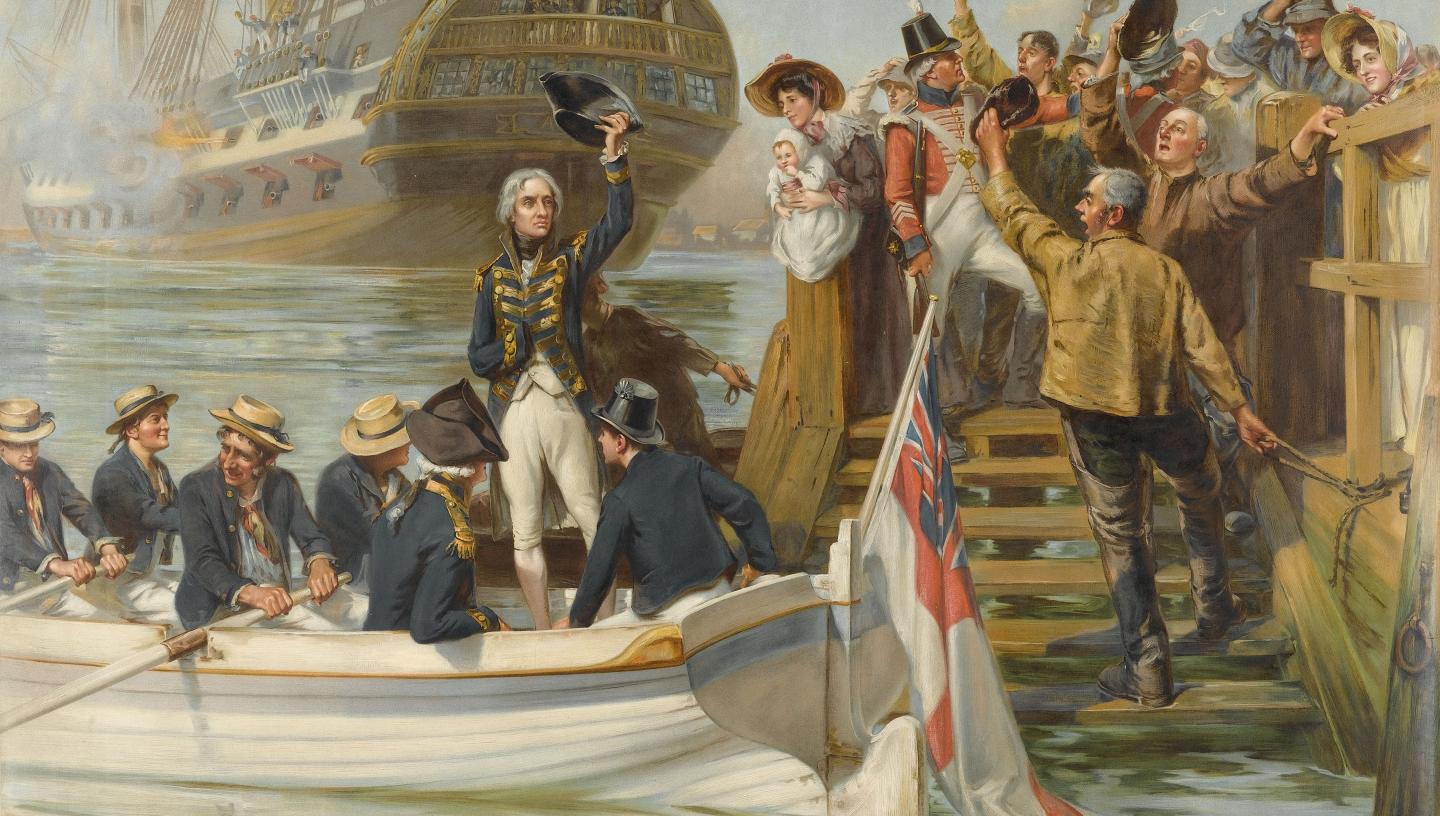
Nelson and Portsmouth
Portsmouth is a major British naval base. Nelson left from Portsmouth on board HMS Victory to go to the Battle of Trafalgar in 1805.
Nelson visited Portsmouth numerous times throughout his career and it was there he last stood on English soil before the Battle of Trafalgar, in 1805.
Why was Portsmouth chosen as a base for the navy?
Strategically placed in Hampshire at the halfway point of the English Channel, it was equally convenient for ships operating in the North Sea and for those heading westwards to the Atlantic. It offered a large stretch of protected inland water with a long expanse of foreshore, ideally suited for naval installations. There is also a spacious, sheltered, deep-water anchorage close by at Spithead, where large fleets could assemble in safety.
How did the Royal Dockyard in Portsmouth develop?
Warships had been based at Portsmouth since the 1200s, but King Henry VII founded the naval dockyard in 1495. By 1800 the Royal Dockyard had expanded to become one of the largest industrial complexes in the country, employing over 1000 men to build and repair warships, and to manufacture all the equipment needed to keep them afloat and in fighting trim.
When did Nelson visit Portsmouth?
Nelson visited Portsmouth a number of times. The first was in 1776, when he was just 17, on his way to take up an appointment as a lieutenant in HMS Worcester. Nearly 30 years later, in 1805, he ate his last meal in England at the George Hotel in the town centre, before embarking on HMS Victory on his way to the Battle of Trafalgar.
Generally, his memories of Portsmouth tended to be of unhappy returns – as in 1797 when he came back a pain-racked invalid after losing his arm in an attack on Santa Cruz, Tenerife – and of emotional partings – particularly from his lover, Emma Hamilton, in 1803, and again in 1805.
How is Nelson remembered in Portsmouth?
Portsmouth is now one of the principal centres in Britain for studies of Nelson, and his flagship HMS Victory lies in drydock there. Many of Nelson's relics are displayed in the National Museum of the Royal Navy there. In nearby Old Portsmouth, it’s still possible to trace the route of the last walk he took in England from the George Hotel to the beach.
Find out more about Nelson’s life and career
The National Maritime Museum has a permanent gallery on Lord Nelson’s life and his legacy for your to discover. Entry to the National Maritime Museum is free, open daily from 10am. Plan your visit


